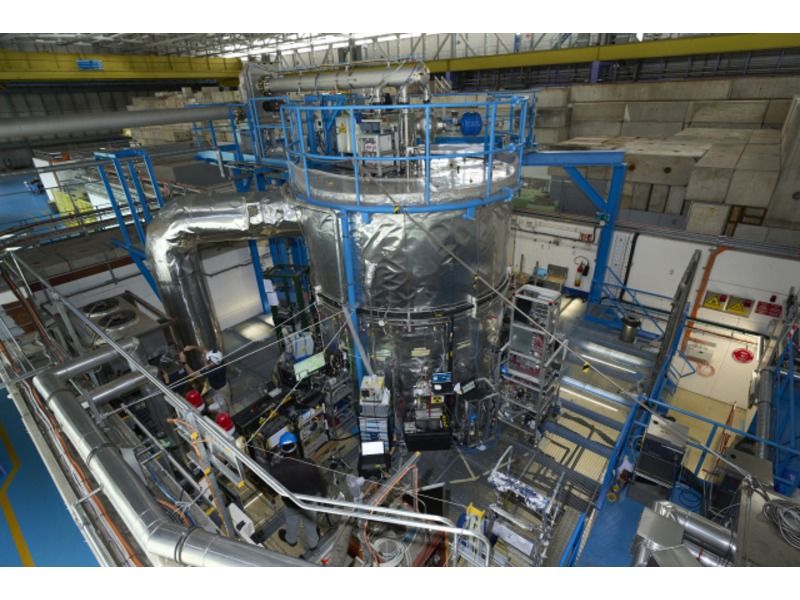
How Earth’s Atmosphere Shields Life from Cosmic Catastrophes
The impact of enhanced cosmic radiation from a nearby supernova on Earth’s biosphere would be limited by the resulting increase in cloud and aerosol abundance, according to Earth system modelling, conducted by researchers of the Center of Climate and Atmosphere Research Center (CARE-C) at the Cyprus Institute (CyI), that accounts for atmospheric aerosols formation processes. The quest to understand our planet’s climate and the factors that influence it has led scientists down many intriguing paths. One such path is the investigation of cosmic rays and their potential effects on Earth’s climate and even mass extinction events. At the forefront of this research is the CLOUD experiment at CERN, a groundbreaking project, which scientists of CARE-C participate in, designed to explore the influence of these high-energy particles on our atmosphere.
Although the sun emits low-energy charged particles, the most energetic cosmic rays arise from supernovae – massive explosions marking the death of stars. A supernova occurs around every century in the Milky Way, leading to a steady rain of cosmic rays falling on Earth. However, if a supernova were to occur close to Earth it could produce a large increase in the cosmic ray flux on Earth, potentially impacting the climate and life on our planet. Geological evidence indicates that a supernova within 300 light years of Earth occurs around once per million years. Such nearby supernova can produce an intense gamma-ray burst and a 100-fold increase of cosmic rays, lasting several centuries!
Cosmic rays ionize the atmosphere, leading to the formation of nitrogen oxides which deplete stratospheric ozone and hence increase the exposure of life on Earth to ultraviolet (UV) light from the Sun. It has been postulated that such events could have even caused mass extinctions. The cosmic ray flux from a nearby supernova could also lead to increased aerosol formation, resulting in more cloud cover and a potential cooling of the Earth’s climate – a cosmic ray winter. However, to date this effect had not been quantified, as precise measurements of ions and associated aerosol formation processes under atmospheric conditions are only recently becoming understood. Additionally, computationally-demanding detailed Earth system models are needed to capture the complexity and feedbacks of atmospheric processes.
The CLOUD experiment provides the precisely controlled, ultra-clean conditions to measure particle formation, in the presence of beam from CERN accelerators that reproduce ions throughout the atmosphere. CARE-C has joined the CLOUD collaboration, teaming with advanced partners, the Max Planck Institute for Chemistry (MPIC), and the University of Helsinki. In the Earth system model developed and run by MPIC and CyI, we include parameterisations for all relevant atmospheric ion-aerosol formation processes that produce cloud condensation nuclei, uniquely measured by CLOUD, as well as state-of-the-art stratospheric ozone chemistry.
Assuming a 100-fold increase of cosmic ray flux incident on Earth’s atmosphere, we find the seasonal local maximum depletion of stratospheric ozone is about 30%, located over the polar regions. This is of similar magnitude to the present-day polar ozone loss caused by anthropogenic emissions. The impact of enhanced cosmic radiation from a nearby supernova on Earth’s biosphere would be further limited by the resulting increase in cloud and aerosol abundance, according to Earth system modelling that accounts for atmospheric aerosols formation processes. This also holds in a sensitivity study with just 2% oxygen in the atmosphere, similar to conditions during the early Cambrian, a period renowned for its surge in biodiversity and evolutionary pace. Surprisingly, at one tenth the ambient oxygen compared with today, the ozone layer is only 3 times thinner, providing a UV protective shield for the evolution of life on land. Finally, we estimate the increase in cloud condensation nuclei abundance from ion-induced nucleation of aerosol particles exerts a global mean radiative forcing of -2.5 Watt/m2 (a cooling), which is comparable in magnitude but of opposite sign to current anthropogenic climate forcing. All these changes are remarkably mild for such a large increase in cosmic ray flux, and they show how protective the atmosphere has been – and will continue to be – for the evolution of life on Earth in a hostile cosmic environment.
The CLOUD experiment at CERN is more than a study of atmospheric science; it is a window into the cosmic forces that shape our planet’s climate and influence life itself. By exploring the role of cosmic rays in both cloud formation and mass extinction events, CLOUD offers valuable insights that enhance our understanding of Earth’s complex climate system and its history. As we continue to investigate these cosmic mysteries, the knowledge gained from CLOUD at CERN will be instrumental in preparing for and mitigating the potential impacts of abrupt climate change on our world.
Earth’s atmosphere protects the biosphere from nearby supernovae.
Christoudias, T., Kirkby, J., Stolzenburg, D. et al.
Communications Earth & Environment 5, 326 (2024).
Image caption:
“The CLOUD experiment at CERN (© 2022-2024 CERN, License: CC-BY-4.0)”



